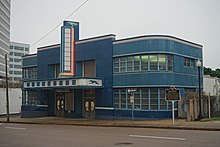
James Leonard Farmer Jr. was an American civil rights activist and leader in the Civil Rights Movement "who pushed for nonviolent protest to dismantle segregation, and served alongside Martin Luther King Jr." He was the initiator and organizer of the first Freedom Ride in 1961, which eventually led to the desegregation of interstate transportation in the United States.

Mississippi State Penitentiary (MSP), also known as Parchman Farm, is a maximum-security prison farm located in the unincorporated community of Parchman in Sunflower County, Mississippi, in the Mississippi Delta region. Occupying about 28 square miles (73 km2) of land, Parchman is the only maximum security prison for men in the state of Mississippi, and is the state's oldest prison.
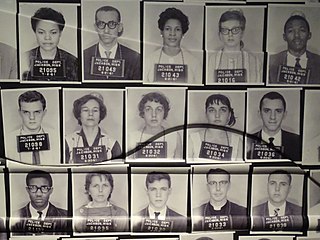
Freedom Riders were civil rights activists who rode interstate buses into the segregated Southern United States in 1961 and subsequent years to challenge the non-enforcement of the United States Supreme Court decisions Morgan v. Virginia (1946) and Boynton v. Virginia (1960), which ruled that segregated public buses were unconstitutional. The Southern states had ignored the rulings and the federal government did nothing to enforce them. The first Freedom Ride left Washington, D.C., on May 4, 1961, and was scheduled to arrive in New Orleans on May 17.
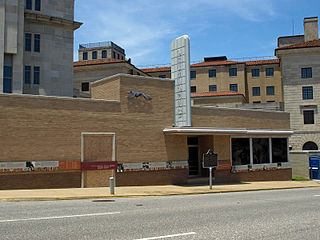
The Freedom Rides Museum is located at 210 South Court Street in Montgomery, Alabama, in the building which was until 1995 the Montgomery Greyhound Bus Station. It was the site of a violent attack on participants in the 1961 Freedom Ride during the Civil Rights Movement. The May 1961 assaults, carried out by a mob of white protesters who confronted the civil rights activists, "shocked the nation and led the Kennedy Administration to side with civil rights protesters for the first time."
Charles Person is an African-American civil rights activist who participated in the 1961 Freedom Rides. He was born and raised in Atlanta, Georgia. Following his 1960 graduation from David Tobias Howard High School, he attended Morehouse College. Person was the youngest Freedom Rider on the original Congress of Racial Equality Freedom Ride. His memoir Buses Are a Comin': Memoir of a Freedom Rider was published by St. Martin's Press in 2021.
William E. Harbour was an American civil rights activist who participated in the Freedom Rides. He was one of several youth activists involved in the latter actions, along with John Lewis, William Barbee, Paul Brooks, Charles Butler, Allen Cason, Catherine Burks, and Lucretia Collins.
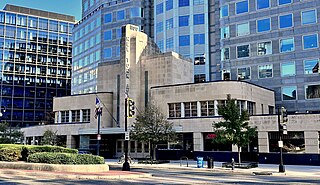
The Old Greyhound Terminal was a bus terminal serving Greyhound Lines located at 1100 New York Avenue NW in Northwest, Washington, D.C. in the United States operating from 1940 to the 1980s. It was used extensively during World War II to transport servicemen, and played a minor role in the Civil Rights Movement. It was saved through the intervention of preservationists. Most of the building was incorporated in the new 1100 New York Avenue high-rise office building when it was built in 1991.

Joan Trumpauer Mulholland is an American civil rights activist who was active in the 1960s. She was one of the Freedom Riders who was arrested in Jackson, Mississippi in 1961, and was confined for two months in the Maximum Security Unit of the Mississippi State Penitentiary. The following year she was the first white student to enroll at Tougaloo College in Jackson, Mississippi and served as the local secretary of the Student Nonviolent Coordinating Committee (SNCC).
Zev Aelony was an American activist involved in the Civil Rights Movement. He was an organizer of the civil rights student group Students for Integration, a CORE Soul Force Member, a Freedom Rider, and one of the Americus Four who faced a death penalty for helping citizens legally vote.
Henry "Hank" James Thomas is an African American civil rights activist and entrepreneur. Thomas was one of the original 13 Freedom Riders who traveled on Greyhound and Trailways buses through the South in 1961 to protest racial segregation, holding demonstrations at bus stops along the way.
This is a timeline of the civil rights movement in the United States, a nonviolent mid-20th century freedom movement to gain legal equality and the enforcement of constitutional rights for people of color. The goals of the movement included securing equal protection under the law, ending legally institutionalized racial discrimination, and gaining equal access to public facilities, education reform, fair housing, and the ability to vote.

Margaret Winonah Beamer Myers was an American political activist, who, in 1961 at the age of 19, became a Freedom Rider. Freedom Riders were civil rights activists who rode interstate buses into the segregated southern United States in 1961 and following years to challenge the non-enforcement of the United States Supreme Court decisions Irene Morgan v. Commonwealth of Virginia (1946) and Boynton v. Virginia (1960). She was arrested in Jackson, Mississippi and spent almost six months in Mississippi State Penitentiary, better known as Parchman Farm, the oldest prison and the only maximum-security prison for men in the state of Mississippi. Of all the Freedom Riders, white or black, Winonah Beamer served the longest sentence and was the only Freedom Rider who served her full term.

Oretha Castle Haley was an American civil rights activist in New Orleans where she challenged the segregation of facilities and promoted voter registration. She came from a working-class background, yet was able to enroll in the Southern University of New Orleans, SUNO, then a center of student activism. She joined the protest marches and went on to become a prominent activist in the Civil Rights Movement.

The Freedom Riders National Monument is a United States National Monument in Anniston, Alabama established by President Barack Obama in January 2017 to preserve and commemorate the Freedom Riders during the Civil Rights Movement. The monument is administered by the National Park Service. The Freedom Riders National Monument is one of three National Monuments that was designated by presidential proclamation of President Obama on January 12, 2017. The second was the Birmingham Civil Rights National Monument and the third, the Reconstruction Era National Historical Park, was re-designated as a National Historical Park on March 12, 2019.

William Strudwick Arrasmith was an American architect known for his designs for Greyhound bus stations in the Streamline Moderne style popular in the 1930s and 1940s. Among the over 60 stations he designed are the Cleveland Greyhound Bus Station (1948), the Montgomery, Alabama, Greyhound Bus Station (1951), and the Evansville, Indiana, Greyhound Bus Terminal (1938) which are listed on the National Register of Historic Places.
Frederick Leonard is an American activist who was involved in the civil rights movement.
William Nowland Van Powell (1904–1977), sometimes known professionally as William Van Powell or Nowland Van Powell was an American architect, painter, and historian from Memphis, Tennessee.
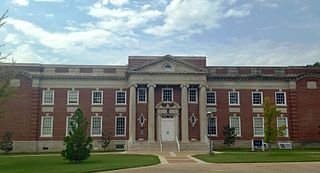
George Mahan Jr. was an American architect based in Memphis, Tennessee. He designed courthouses, many residences, and schools. Many of his designs were Neoclassical architecture style, and several buildings he designed are listed on the National Register of Historic Places (NRHP).

Bruce Carver Boynton was an American civil rights leader who inspired the Freedom Riders movement and advanced the cause of racial equality by a landmark supreme court case Boynton v. Virginia.

The Anniston and Birmingham bus attacks, which occurred on May 14, 1961, in Anniston and Birmingham, both Alabama, were acts of mob violence targeted against civil rights activists protesting against racial segregation in the Southern United States. They were carried out by members of the Ku Klux Klan and the National States' Rights Party in coordination with the Birmingham Police Department. The FBI did nothing to prevent the attacks despite having foreknowledge of the plans.



